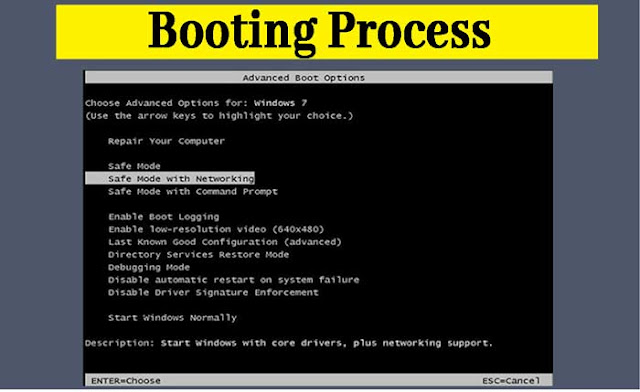What does the boot mean?
The term starting is used to describe the process that takes the computer when the operating system is turned on and loaded and prepares the system for use.
Start, start and start are synonymous terms and generally describe the long list of things that happen when pressing the power button to a fully charged session and ready to use an operating system, such as Windows.
The term starting is used to describe the process that takes the computer when the operating system is turned on and loaded and prepares the system for use.
Start, start and start are synonymous terms and generally describe the long list of things that happen when pressing the power button to a fully charged session and ready to use an operating system, such as Windows.
What happens during the boot process?
From the beginning, when the ignition button is pressed to turn on the computer, the power supply unit feeds the motherboard and its components so that they can play their role throughout the system.
The first part of the next step of the starting process is controlled by the BIOS and begins after the post. This is when you are given post error messages if there is a problem with any of the equipment.
After visualization of different information on the monitor, such as the BIOS manufacturer and the details of the RAM, the BIOS finally delivers the startup process to the master start code, which delivers it to the volume start code, and finally to the Start administrator to handle rest.
This is how BIOS finds the correct hard drive that the operating system has. It makes it by checking the first sector of the hard drives that identifies.
When you find the correct unit that has a boot loader, the memory load so that the boot loader program can load the operating system in the memory, which is how it uses the operating system that is installed in the unit.
In the latest versions of Windows, Bootmgr is the boot administrator that is used.
The explanation of the boot process that has just been read is a very simplistic version of what happens, but gives it an idea of what is involved.
Hard start (cold) versus soft boot (warm)
You may have heard the terms hard / cold start and soft / warm start and have been wondered what it meant. Starting is not just starting? How can you have two different types?
A cold start is when the computer starts from a completely dead state where the components were previously without any energy. A hard start is also characterized because the computer performs an ignition or post self-test.
However, there are contradictory perspectives on what a cold start really involves.
For example, restarting a computer that runs Windows can make you think that it is performing a cold restart because the system seems to go off, but it does not really turn off the power of the motherboard, in which case it would be applying a soft restart.
Full restart is also the term used to describe when the system does not turn off in an orderly manner. For example, holding press button to turn off the system in order to restart is called forced restart.
More information about boot
You may think that learning about the boot process is nonsense or it does not make sense and maybe it is for most people, but not always.
If you want to learn how to start the computer from a flash or disk drive, you must first understand that a point that gives you that opportunity comes during the startup process.
The problems that occur during the boot process are not common, but they happen. Consult our article on how to repair a computer that does not start to get help to discover what is wrong.
The term "boot" comes from the phrase "get up with boots". The idea is to understand that there must be a piece of software that can be executed initially, rather than other software, so that the operating system and programs can be executed.












0 Comments